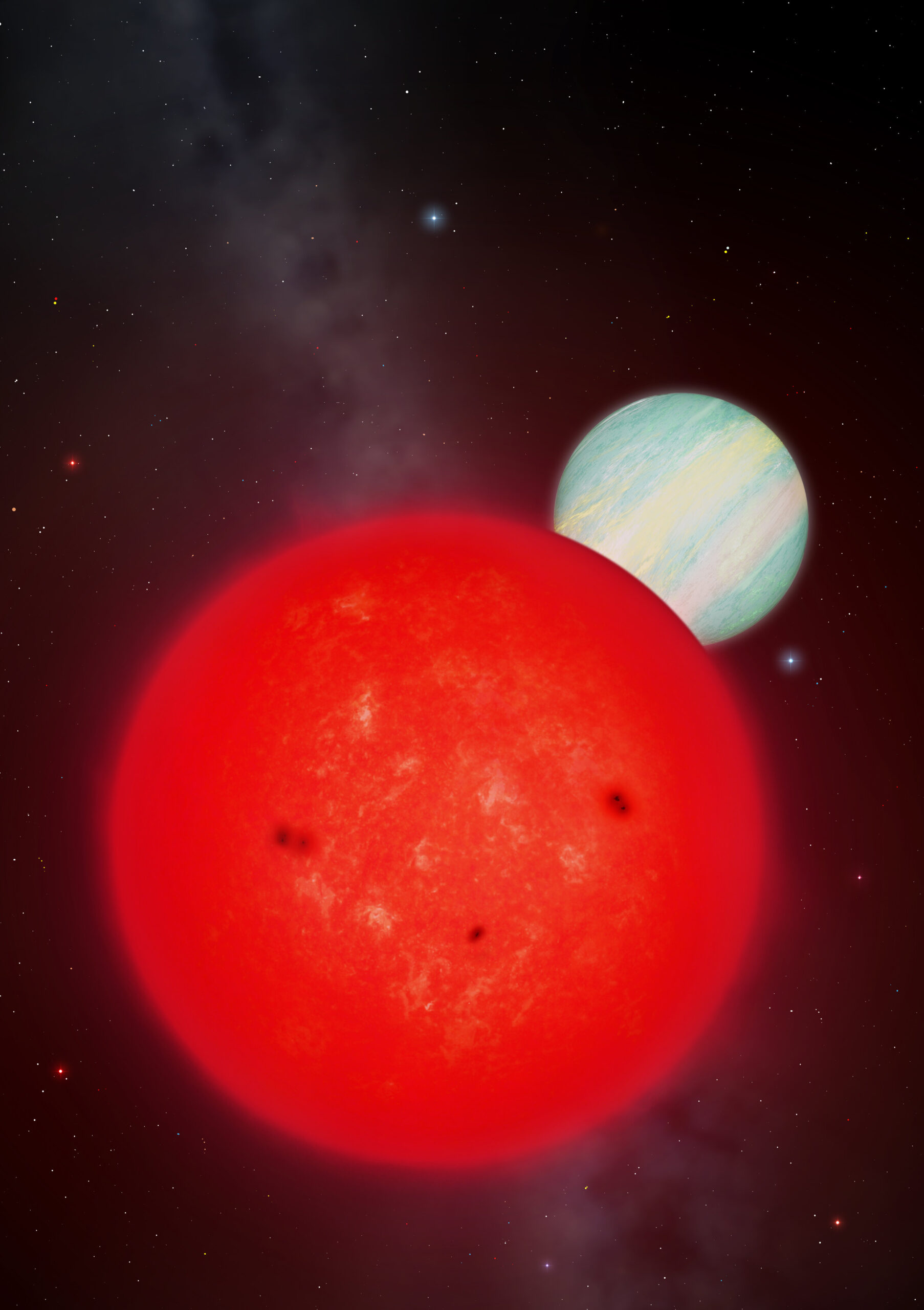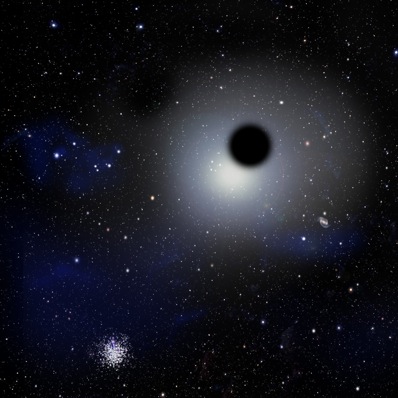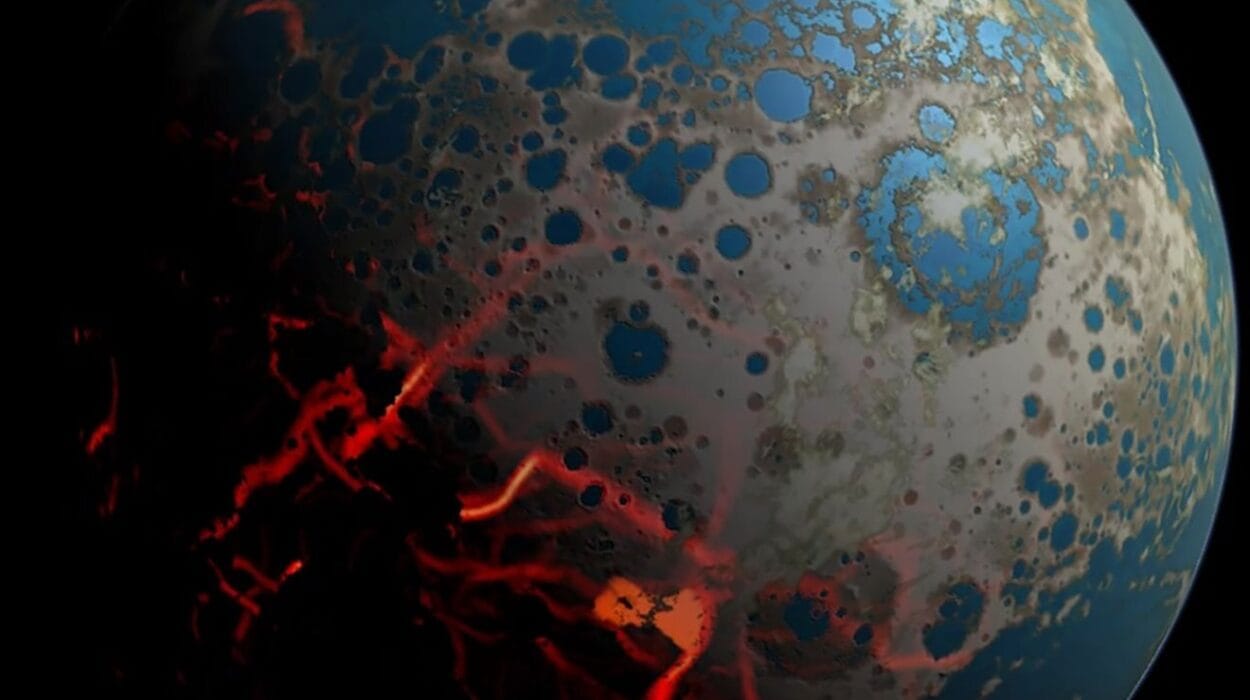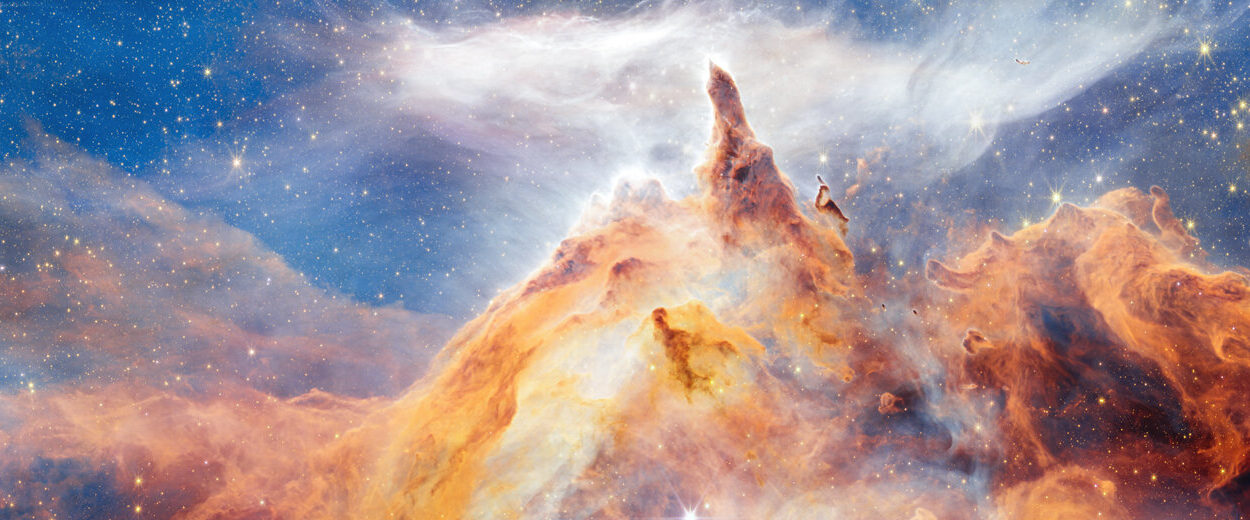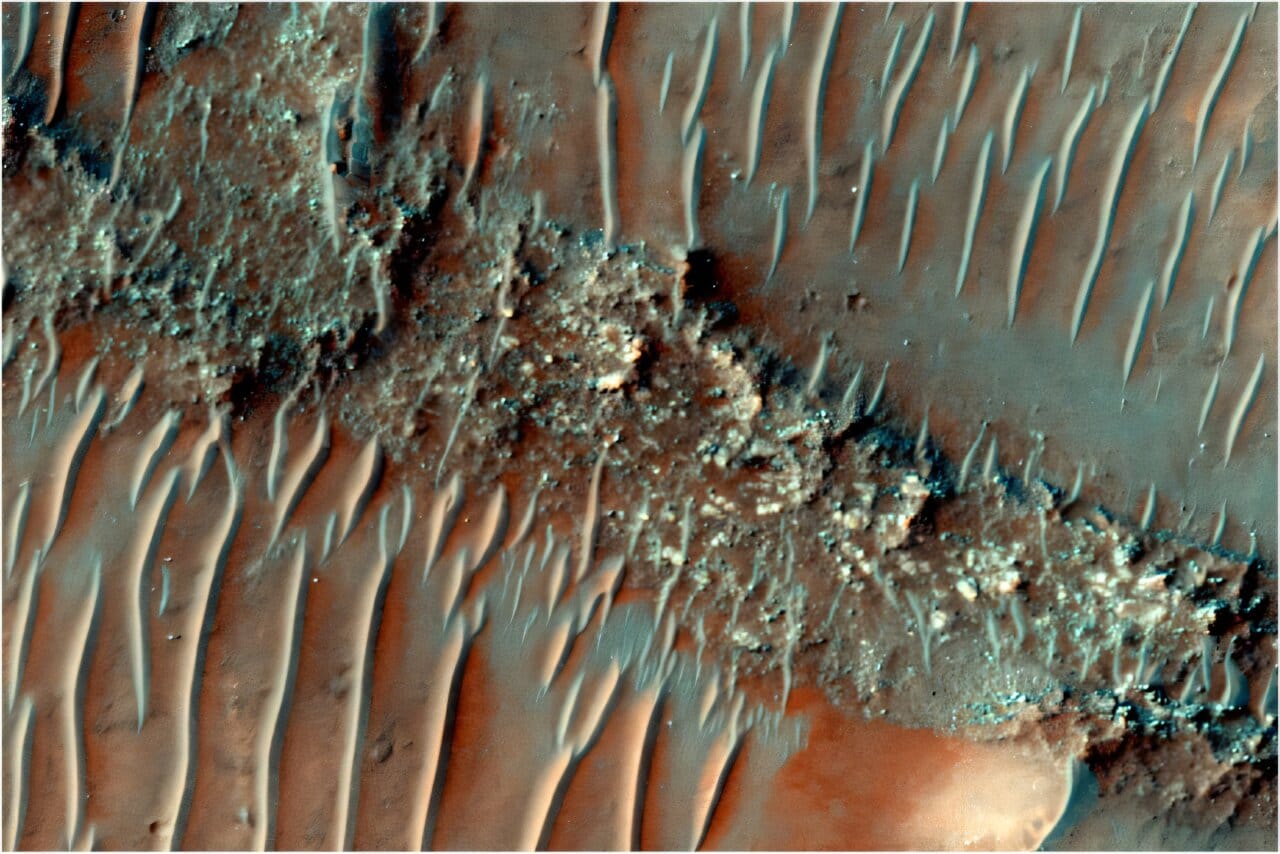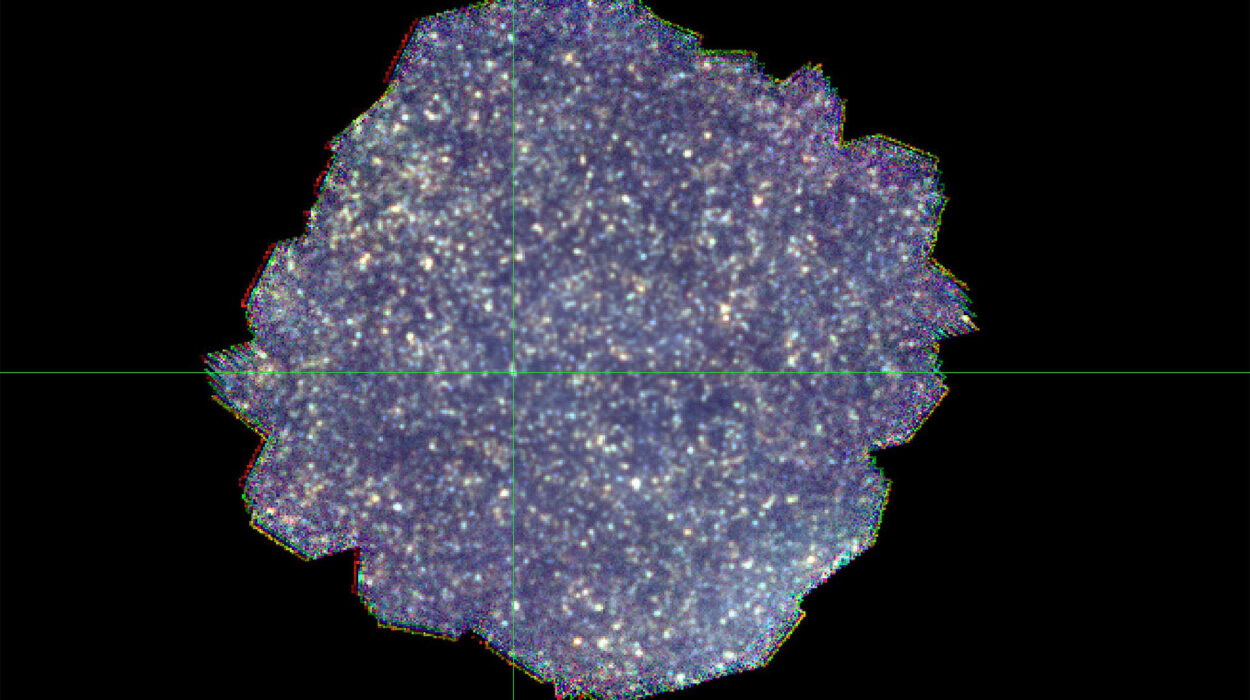The universe has a way of surprising us, often in the most unexpected corners. One of the latest cosmic curveballs comes from a tiny red dwarf star nestled quietly in our galaxy, known as TOI-6894. Stars like this are not particularly glamorous—just dim, small, and cool, about 20% the mass of our own Sun. These stars are the most common in the Milky Way, often dismissed in the hunt for giant planets. And yet, defying decades of theoretical expectations, TOI-6894 is home to an enormous, low-density gas giant: TOI-6894b.
This jaw-dropping discovery, detailed in the journal Nature Astronomy, has not only shaken the foundations of current planetary formation theories but also opened an entirely new window into the study of alien worlds. At the heart of the story is a team of international astronomers who were combing through a sea of data from NASA’s Transiting Exoplanet Survey Satellite (TESS) when they found something they didn’t think was possible.
Let’s explore what makes TOI-6894b so fascinating—and why it’s forcing scientists to rewrite the rules of planet formation.
A Tiny Star With a Giant Surprise
TOI-6894 is a red dwarf star, one of the smallest and faintest types of stars in the universe. These stars typically burn with a cool, reddish light and have relatively weak gravitational fields compared to larger stars like the Sun. That combination means their surrounding protoplanetary disks—where planets are born—tend to have very limited amounts of gas and dust. According to long-standing planetary formation models, such sparse material shouldn’t be capable of forming gas giants.
And yet, Dr. Edward Bryant, an astrophysicist who conducted this research at the University of Warwick and UCL’s Mullard Space Science Laboratory, found exactly that: a gas giant with the mass of only half that of Saturn but with a radius even larger, floating around a minuscule star that shouldn’t be able to support such a planet.
Bryant initially sifted through data from over 91,000 red dwarfs cataloged by TESS. It was meticulous, often tedious work, but it paid off when the unmistakable transit signature—a brief dimming of starlight as a planet crosses in front of its star—revealed the presence of TOI-6894b.
To confirm the find, Bryant and his colleagues turned to one of the largest telescopes on Earth: the European Southern Observatory’s Very Large Telescope (VLT). The massive planet transiting such a low-mass star became the lowest-mass host star ever found with a giant planet orbiting it—making TOI-6894b an absolute outlier in the exoplanet world.
Cracks in the Core Accretion Theory
Why is this discovery so puzzling? Because it flies in the face of the widely accepted core accretion model of planet formation.
In this model, a planetary embryo forms from small particles of rock and ice colliding and sticking together. Once this embryo (or “core”) becomes massive enough, it begins to attract gas from the surrounding disk. If it grows quickly and becomes large enough, it triggers a runaway process that leads to the creation of a gas giant.
But there’s a catch: this process requires a substantial amount of material—particularly gas—in the protoplanetary disk. Around small stars like TOI-6894, such conditions are believed to be rare or insufficient for forming giant planets. The disk is simply too light and dissipates too quickly to allow a massive core to develop and start accumulating gas before it’s too late.
So how did TOI-6894b come to be?
Alternative Formation Theories Enter the Scene
To account for the existence of such an improbable planet, astronomers are now exploring other possible formation pathways.
One is an intermediate version of core accretion, where a growing planet accumulates gas at a more modest rate without ever reaching the tipping point for runaway growth. This scenario still relies on a surprisingly generous supply of gas and dust, which is a problem given TOI-6894’s low mass.
Another possibility is gravitational instability. In this scenario, parts of the protoplanetary disk become so massive and dense that they collapse under their own gravity, directly forming large planets. It’s a more chaotic and less common method, but one that could explain how a planet like TOI-6894b formed in a disk that otherwise wouldn’t support the traditional pathway.
However, neither theory fits all the available data perfectly. The planet’s characteristics, including its mass and density, seem to sit between predictions made by both models. This makes TOI-6894b a planetary mystery and a potentially paradigm-shifting case.
A Cool Atmosphere With Hot Questions
Adding to the intrigue is the unusual nature of TOI-6894b’s atmosphere. Most gas giants discovered so far—especially those found close to their host stars—are known as “hot Jupiters,” with temperatures soaring between 1,000 and 2,000 Kelvin. These hellish worlds are easier to detect due to their strong transit signals and high brightness in infrared wavelengths.
TOI-6894b is much different. Orbiting a cooler, dimmer star, it maintains a surprisingly chilly atmosphere, with temperatures hovering around 420 Kelvin—cooler than your oven but still several times hotter than Earth.
This low temperature opens up tantalizing new opportunities for atmospheric research. At such temperatures, exotic molecules like methane and even ammonia—both rarely seen in exoplanetary atmospheres—can survive and become detectable. Professor Amaury Triaud of the University of Birmingham, a co-author of the study, believes TOI-6894b could become a cornerstone in the study of methane-dominated atmospheres, especially those involving carbon, nitrogen, and oxygen chemistry outside our solar system.
Thanks to its deep, prominent transits and relatively cool temperature, TOI-6894b is one of the best-suited planets for atmospheric characterization using cutting-edge tools like the James Webb Space Telescope (JWST), which is scheduled to observe it within the next year.
A Rosetta Stone for Planet Formation
Dr. Vincent Van Eylen of UCL’s Mullard Space Science Laboratory sees TOI-6894b as more than just an outlier—he sees it as a Rosetta Stone for exoplanet science. “By finding planetary systems that don’t look like our own, we test the boundaries of our models,” he said. “And when the models fail, we learn something fundamentally new.”
In other words, TOI-6894b could serve as a laboratory for exploring how planets form and evolve under conditions vastly different from those of our solar system. Whether it’s a slow-growing gas giant that tiptoed past the finish line or a cosmic oddball born from gravitational chaos, the lessons it teaches could ripple throughout astronomy.
A Milestone for Exoplanet Research
For the team of astronomers who discovered it, TOI-6894b represents the culmination of years of effort. The discovery was part of a larger program investigating how often small stars form giant planets—a question long considered settled but now thrown wide open.
Dr. Andrés Jordán of the Millennium Institute of Astrophysics in Chile described the finding as both a challenge and an opportunity: “This system provides a new challenge for models of planet formation and a fascinating target for atmospheric characterization. Our efforts are changing how we think about what types of stars can host which types of planets.”
These results could significantly alter our estimates of how common gas giants are in our galaxy. If even the tiniest stars can host giant planets, then the number of potential planetary systems—especially those that defy expectations—might be much higher than previously believed.
Looking Ahead
As observations of TOI-6894b continue, especially with the upcoming JWST analysis, astronomers hope to answer some of the most burning questions about its origin, structure, and atmospheric composition. Whether this gas giant turns out to be an anomaly or the first of many similar finds, it’s already had a massive impact.
It has reminded the scientific community of something important: even in a galaxy of hundreds of billions of stars, the cosmos still knows how to keep secrets—and every so often, it lets us in on one.
TOI-6894b may orbit a faint, unassuming red dwarf, but it is casting a long, dazzling shadow across the field of exoplanet science. In the quiet hum of its orbit, astronomers hear the thrilling challenge of rewriting the rulebook. And in doing so, they edge closer to answering one of humanity’s oldest questions: how common are planets like our own—and how many ways can worlds be born?
Reference: A transiting giant planet in orbit around a 0.2-solar-mass host star, Nature Astronomy (2025). DOI: 10.1038/s41550-025-02552-4
